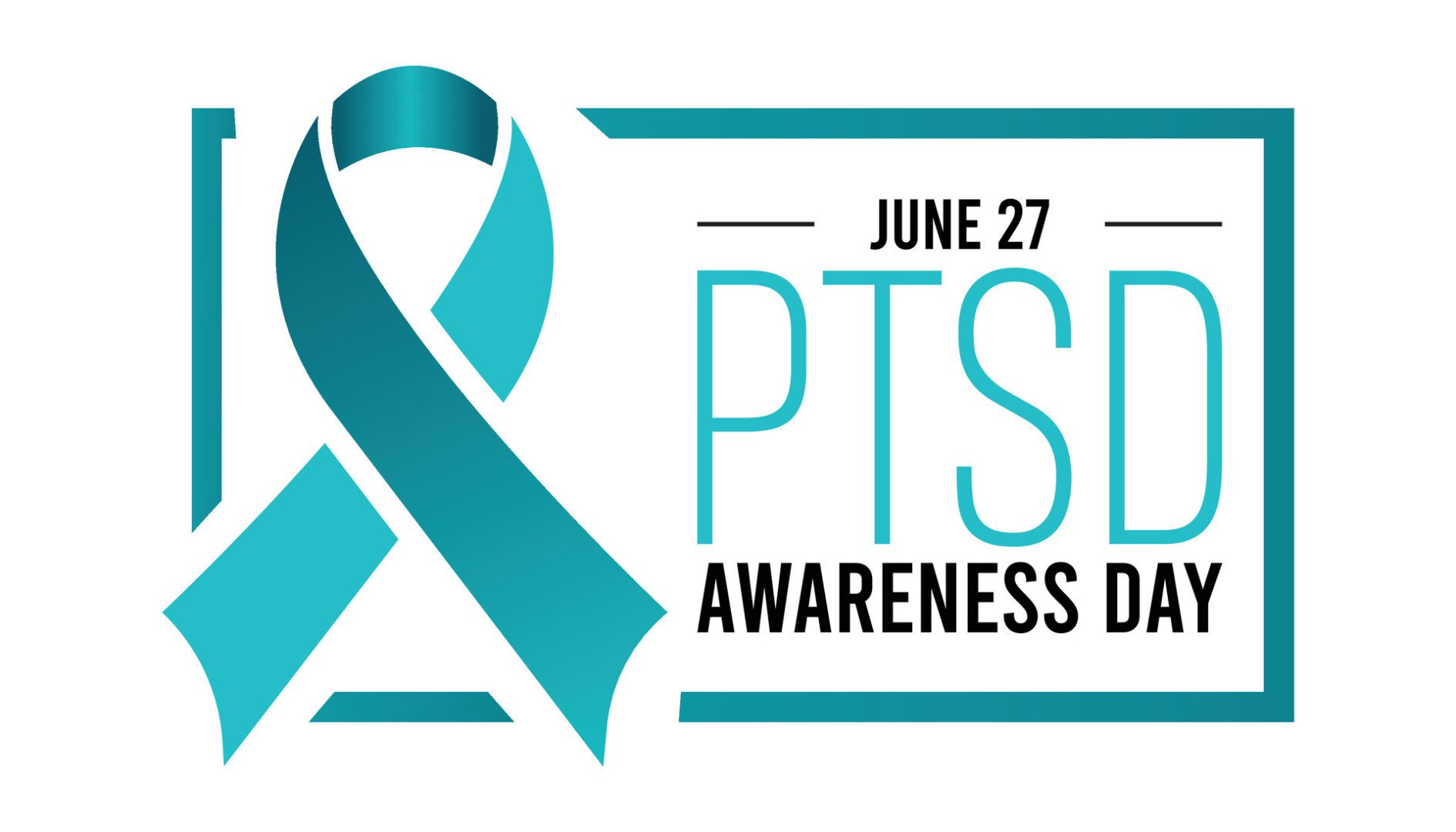Search by Color or Cause


National PTSD Awareness Day is observed every year on June 27. Post-Traumatic Stress Disorder is represented by the awareness color teal. Wear a teal enamel awareness pin, fabric teal ribbon, or a teal silicone wristband to raise awareness of PTSD Awareness Day. In addition, June is also PTSD Awareness Month.
PTSD stands for Post-Traumatic Stress Disorder and is a condition that many veterans and non-veterans alike suffer. For example, PTSD can occur when someone experiences or witnesses a traumatic event.
Further, this condition wasn’t always understood properly by the medical or military community. In fact, Department of Defense press releases often pointed to earlier attempts to identify PTSD symptoms in the wake of service in World War 2, Vietnam, and other conflicts.
In 2010, Senator Kent Conrad pushed to get official recognition of PTSD via a “day of awareness.” This was done as a tribute to a North Dakota National Guard member who took his life following two tours in Iraq.
Staff Sergeant Joe Biel died in 2007 after suffering from PTSD. As a result of PTSD, Biel committed suicide after his return from duty to his home state. Staff Sergeant Biel’s birthday, June 27, was selected as the official PTSD Awareness Day, which is now observed every year.
In 2014, the Senate designated the full month of June for National PTSD Awareness (S. Res. 481).
Much of what is done to observe PTSD Awareness Day involves encouraging open talk about PTSD, its’ causes, symptoms, and most important of all, getting help for the condition. PTSD is, even in modern times, often misunderstood by those with no firsthand experience with the condition or those who suffer from it. PTSD Awareness Day is designed to help change that.
As mentioned above, PTSD can be the result of experiencing or witnessing a traumatic event. The specific nature of the trauma can and does vary greatly. Medical experts are quick to point out that while combat and combat-related military service can be traumatic, not everyone who serves under such conditions reacts the same way. Some may develop symptoms of PTSD, while others may be unaffected.
Some sources estimate that as many as 70% of all Americans have experienced a traumatic event sufficient to cause PTSD or PTSD-like symptoms. That does not mean that all 70% of Americans WILL suffer from PTSD. Using these statistics, some 224 million Americans have experienced a traumatic event. Of that number, some 20% will develop PTSD symptoms, roughly 44 million people.
Of that 44 million, an estimated eight percent experience active PTSD symptoms at any one time. An estimated 50% of all mental health patients are also diagnosed with Post-Traumatic Stress Disorder.
The misunderstanding of PTSD began to change in 1980 when it was recognized as a specific condition with identifiable symptoms. As a result, since that time Post-Traumatic Stress Disorder is listed in the American Psychiatric Association’s Diagnostic and Statistical Manual of Mental Disorders (DSM).
Today, the symptoms of Post Traumatic Stress Disorder are better understood, treatable, and recognized by the Department of Veterans Affairs as a service-connected condition. PTSD is not exclusive to veterans or currently serving members of the United States military, but a portion of those who serve are definitely at risk for PTSD.
Some PTSD symptoms may seem vague and non-specific, others are more readily identified specifically as evidence of PTSD. In this context “non-specific” means that the symptoms may be related to other mental health issues. Further, they are not specifically limited to Post-Traumatic Stress Disorder.
In the same way, more “specific” symptoms may be manifest outside PTSD, but when looking for specific signifiers, these issues are common “red flags” that indicate PTSD may be the cause of the suffering rather than a different condition. This is often circumstantial, and there is no one-size-fits-all diagnosis for the condition.
Suicidal thoughts or self-destructive acts are often a result of PTSD or related symptoms. Anyone experiencing thoughts or urges to self-harm should seek immediate care to prevent the condition from getting worse in the short-term.
That said, more non-specific symptoms include varying degrees of irritability, depression, and suicidal feelings. More specific problems, especially where veterans and currently serving military members are concerned, include something known as “hypervigilance” or “hyperarousal”.
Other symptoms include repeatedly experiencing the traumatic event(s) in the form of flashbacks, nightmares, persistent memories of the event(s), and intrusive thoughts about the traumatic event(s).
These symptoms vary in intensity depending on the individual and are not ‘standardized”. They may come and go, or they may be persistent over a span of time. Sometimes PTSD sufferers can be high-functioning. Other times they may be more debilitated by the condition.